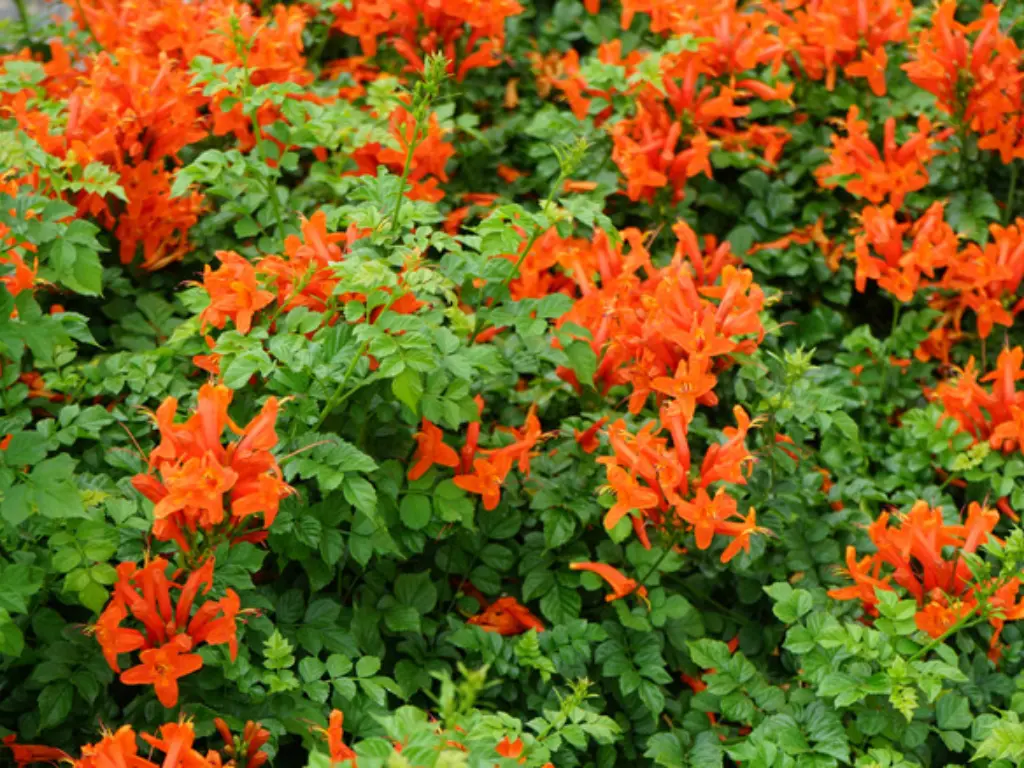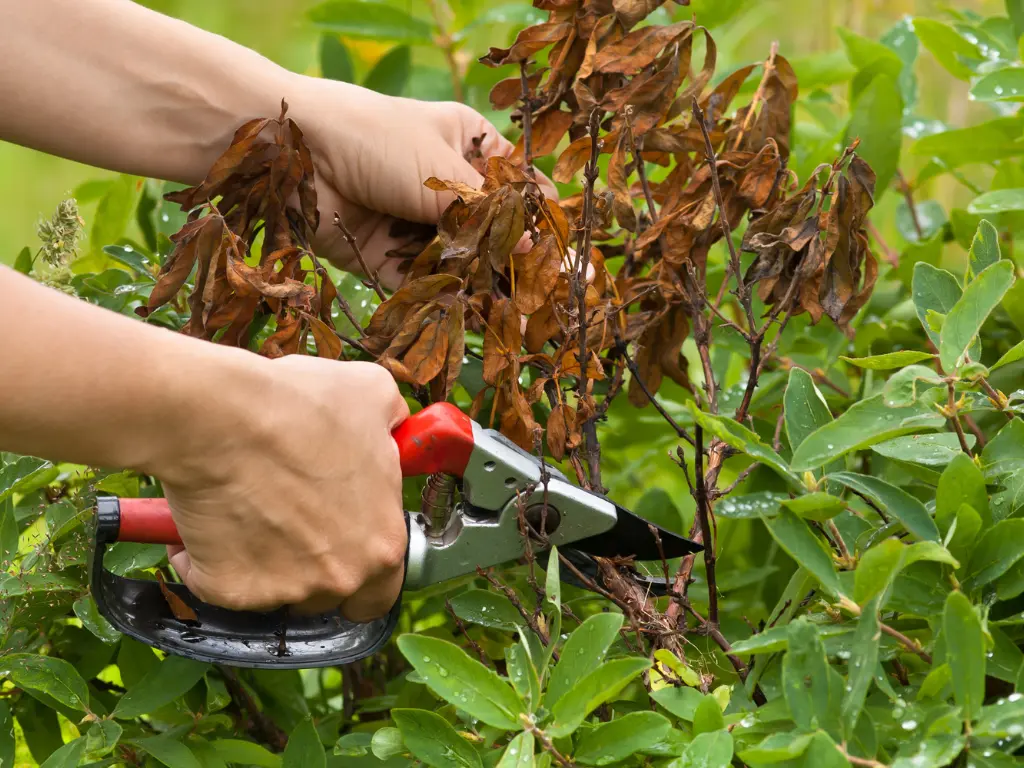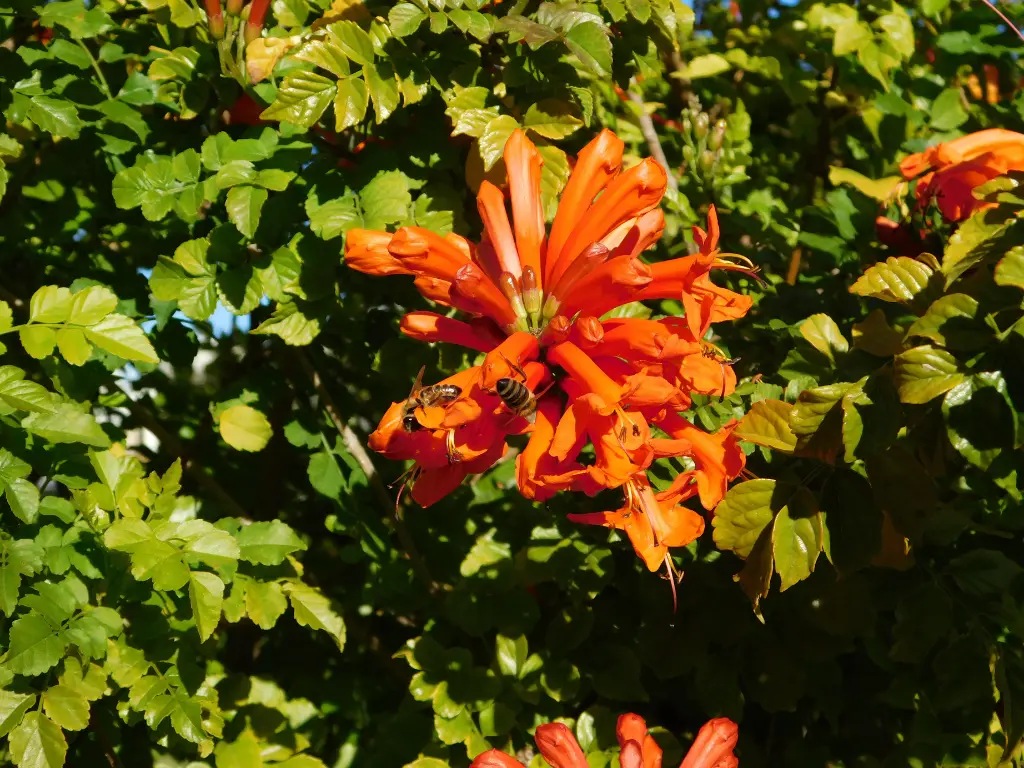As gardeners, we’re always looking for plants that can brighten up our spaces, attract pollinators, and grow well in our climate. If you’ve ever come across Cape Honeysuckle (Tecomaria capensis), you may have been drawn to its stunning, vibrant orange blooms and its fast-growing nature. But here’s the million-dollar question: Is Cape Honeysuckle invasive?
If you’re asking yourself whether it’s safe to plant Cape Honeysuckle in your garden or if it could become a garden troublemaker, you’re not alone. Many gardeners wonder if they can enjoy this beautiful plant without worrying about it taking over their garden. Don’t worry, I’ve got you covered! Let’s take a deeper dive into everything you need to know about Cape Honeysuckle and how to manage it effectively, so you can make the best decision for your garden.
What Makes Cape Honeysuckle Invasive?

Cape Honeysuckle is a native plant of South Africa, known for its fast-growing, sprawling habit. At first glance, this plant is all charm, with its lush green foliage and eye-catching clusters of tubular, orange-red flowers that attract hummingbirds like bees to honey. It sounds like the perfect garden addition, right?
However, its rapid growth can quickly turn it into a problem if it’s not managed properly. This plant is considered an invasive species in many parts of the United States, especially in areas like the South and Southwest.
So, why does it have this invasive reputation?
-
Quick Growth: Cape Honeysuckle has a very fast growth rate. It can grow up to 10-15 feet a year, quickly taking over garden beds, fences, and trellises.
-
Aggressive Root System: The plant’s root system can spread far and wide, and it easily pushes into nearby garden areas. This makes it a challenge to keep it contained, especially when planted in the ground.
-
Seed Dispersal: Cape Honeysuckle produces a lot of seeds that can be carried by wind, birds, and even water. This means it can easily spread to unintended areas of your garden or neighboring properties.
The main concern with Cape Honeysuckle is that its vigor can crowd out other plants in your garden. Over time, it may suppress the growth of native plants, which can lead to an imbalanced ecosystem in your backyard.
How to Identify Cape Honeysuckle in Your Garden
Cape Honeysuckle is a striking plant that stands out. If you already have it in your garden and aren’t sure whether it’s Cape Honeysuckle or something else, here’s what to look for:
- Cape Honeysuckle flowers are vibrant and eye-catching. They are usually bright orange or reddish, shaped like a trumpet, and grow in clusters. These tubular blooms can last from late spring to fall, attracting not only hummingbirds but also bees and butterflies to your garden. Read more: Cape Honeysuckle Blooming Season: When to Expect Vibrant Flowers
- The leaves are dark green, glossy, and oval-shaped, offering a lush backdrop to the vibrant flowers. They’re tough and leathery, providing the plant with a good amount of resistance to pests and diseases.
- Cape Honeysuckle is a vine that grows rapidly. It can reach up to 10 feet or more in a single season, and will readily spread across fences, trellises, or ground if given the space. If left unchecked, it will form a dense mass of stems, making it hard to remove or control.
For more detailed care tips on how to care for your Cape Honeysuckle, visit our full Cape Honeysuckle Care Tips guide.
Can Cape Honeysuckle Be Controlled?

The good news is that Cape Honeysuckle can be managed, but it requires some care and attention. While it might be invasive, it doesn’t mean you can’t enjoy its beauty in your garden. Here are a few essential tips for keeping it in check:
1. Regular Pruning
Pruning is the most effective way to manage this plant. Cut it back regularly to keep it from growing too aggressively. By trimming the vine, you’re reducing the chances of it becoming too sprawling. I recommend trimming back the vines at least twice a year—once after its blooming period and again at the end of the growing season.
Don’t just prune the tips, either. Cut back the plant thoroughly to maintain its shape and limit its growth. When you prune, remove any stems or runners that are growing outside the space you want to allocate for the plant.
2. Install a Root Barrier
Cape Honeysuckle’s root system is quite vigorous, so a root barrier is a great way to keep it from spreading beyond its designated space. A physical barrier can be installed to restrict its roots to a contained area. You can buy pre-made root barriers, or you can use a simple plastic sheet or metal fencing material to create a barrier underground.
This is especially important if you’re planting Cape Honeysuckle near other plants you want to protect. The last thing you want is for your beautiful vine to take over the entire garden!
3. Container Gardening
Another fantastic option is growing Cape Honeysuckle in a container. By planting it in a large pot, you’ll limit its root growth to the confined space of the container, making it much easier to control. Container gardening is a great way to enjoy the plant’s beauty while avoiding its invasive tendencies. Just make sure the container is large enough to support the plant’s growth and has proper drainage.
4. Remove Seedlings Promptly
Cape Honeysuckle is quick to self-propagate through its seeds. Check your garden regularly for any seedlings that may have sprouted. Be proactive and pull out any young plants before they have a chance to grow.
If you find any seeds or flowers that are forming, consider deadheading (removing the spent flowers) to prevent seed production. This can be a little time-consuming, but it will definitely help keep your garden in control.
Non-Invasive Alternatives to Cape Honeysuckle
If you’re interested in the vibrant, colorful look that Cape Honeysuckle offers but want to avoid the potential invasiveness, there are several non-invasive alternatives to consider. These plants can give you the same beauty without the hassle of controlling their growth.
-
Trumpet Vine (Campsis radicans): Another vine with similar trumpet-shaped flowers, but it tends to be more controlled and manageable. With regular pruning, it’s much easier to maintain.
-
Hummingbird Sage (Salvia spathacea): This native plant attracts hummingbirds and butterflies, offering a similar aesthetic to Cape Honeysuckle but without the invasive potential.
-
Coral Honeysuckle (Lonicera sempervirens): A native honeysuckle with vibrant red or orange flowers, this option offers the beauty of Cape Honeysuckle without the risk of it taking over your garden.
These alternatives are perfect if you want to attract pollinators while keeping your garden’s ecosystem healthy and balanced.
Read more: The Most Fragrant Honeysuckle Varieties: A Guide to the Best Smelling Honeysuckles
How to Prevent Cape Honeysuckle from Spreading
It’s not just about planting Cape Honeysuckle; it’s about maintaining it and preventing it from spreading beyond your control. Here are a few more tips on how to prevent Cape Honeysuckle from becoming too invasive in your garden:
1. Control the Roots
As I mentioned earlier, one of the best ways to control is by installing a root barrier. This will prevent the plant’s roots from spreading beyond the garden bed. Make sure to dig a trench deep enough for the barrier to be effective.
2. Regular Maintenance
Don’t let it get too comfortable! Regular maintenance is the key to keeping it under control. Check for any new growth that’s outside of the boundaries you’ve set and trim it back immediately. Also, remove any shoots or suckers that appear along the ground.
3. Limit Seed Production
Deadheading is one of the easiest ways to control seed production. Removing the spent flowers before they have a chance to set seeds will significantly reduce the plant’s ability to spread. By staying on top of this, you’ll prevent unwanted seedlings from popping up all over your garden.
Should You Grow Cape Honeysuckle in Your Garden?

So, now you’re probably wondering: should you plant Cape Honeysuckle in your garden?
If you live in a warm climate and have the time and resources to manage it, this plant can certainly be beautiful and rewarding. Just make sure you’re aware of its potential to spread and take steps to control its growth from the start.
However, if you prefer a low-maintenance garden or are worried about it becoming invasive, you might want to consider some of the non-invasive alternatives I’ve mentioned above.
Frequently Asked Questions (FAQs)
-
Is Cape Honeysuckle invasive in all climates?
-
Cape Honeysuckle is most invasive in warm climates, particularly in USDA zones 9 to 11. It may not pose as much of a problem in cooler climates.
-
-
Can Cape Honeysuckle be grown in containers to prevent invasion?
-
Yes! Growing Cape Honeysuckle in a container is an excellent way to manage its growth. Just ensure the container is large enough and has proper drainage.
-
-
What should I do if Cape Honeysuckle is already spreading in my garden?
-
If Cape Honeysuckle is spreading, remove seedlings, prune it regularly, and install a root barrier to prevent further expansion.
-
-
Are there any natural methods to control Cape Honeysuckle invasion?
-
Yes! You can manually pull out seedlings, apply mulch to suppress growth, and deadhead the flowers to prevent seed production.
-
Conclusions
Cape Honeysuckle is a beautiful, fast-growing plant that can bring a pop of color and attract pollinators to your garden. However, it has the potential to become invasive if not properly managed.
By pruning regularly, using root barriers, and being vigilant about seed removal, you can enjoy the beauty of this plant without letting it take over your space. If you’re not up for the challenge, there are plenty of non-invasive alternatives to Cape Honeysuckle that will bring similar beauty to your garden without the worry.
Now, it’s up to you! Whether you decide to plant Cape Honeysuckle or choose a more manageable alternative, make sure to keep these tips in mind to create the vibrant, healthy garden you’ve always wanted. Happy gardening!
